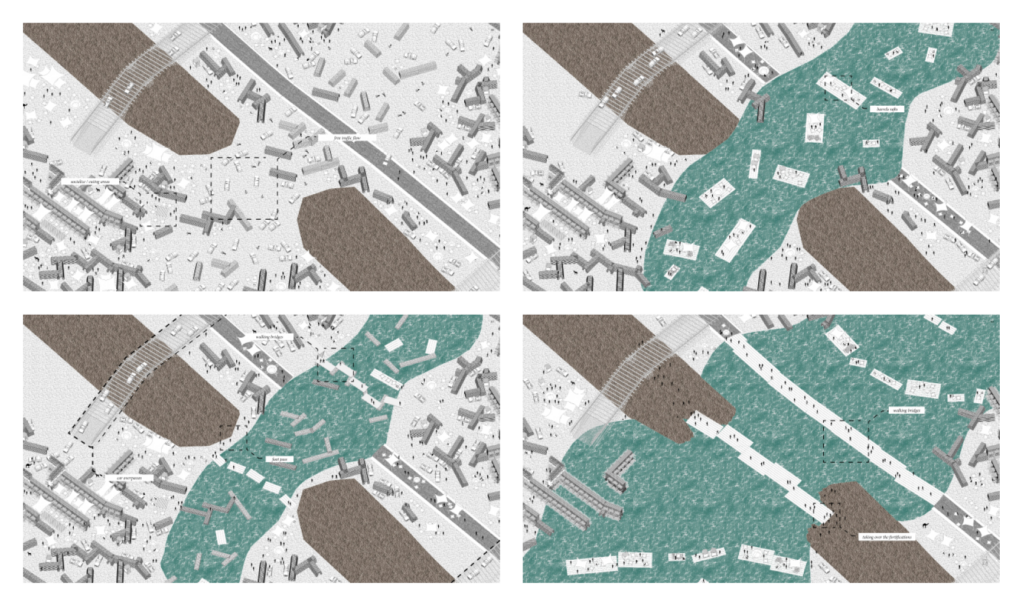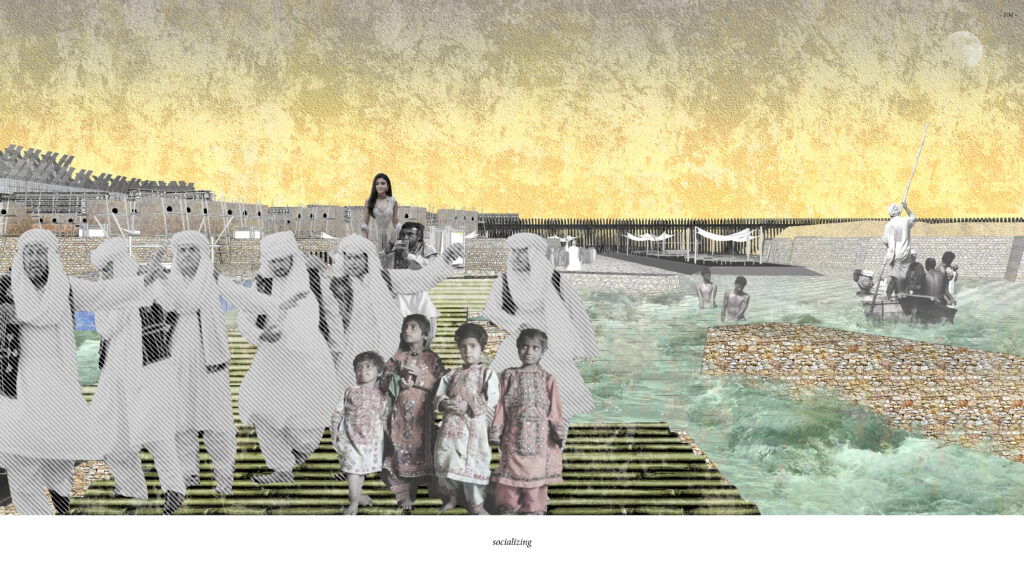THE SECTORS

Trading sector
Smugglers adapt their trading premises to the cycles of the periodic rivers. They either trade on the riverbed or transport their goods with rafts constructed from oil barrels and bamboo when the river emerges. When needed, they would colonize the river totally with enclosed traffic lanes and specially destined fishing sectors.
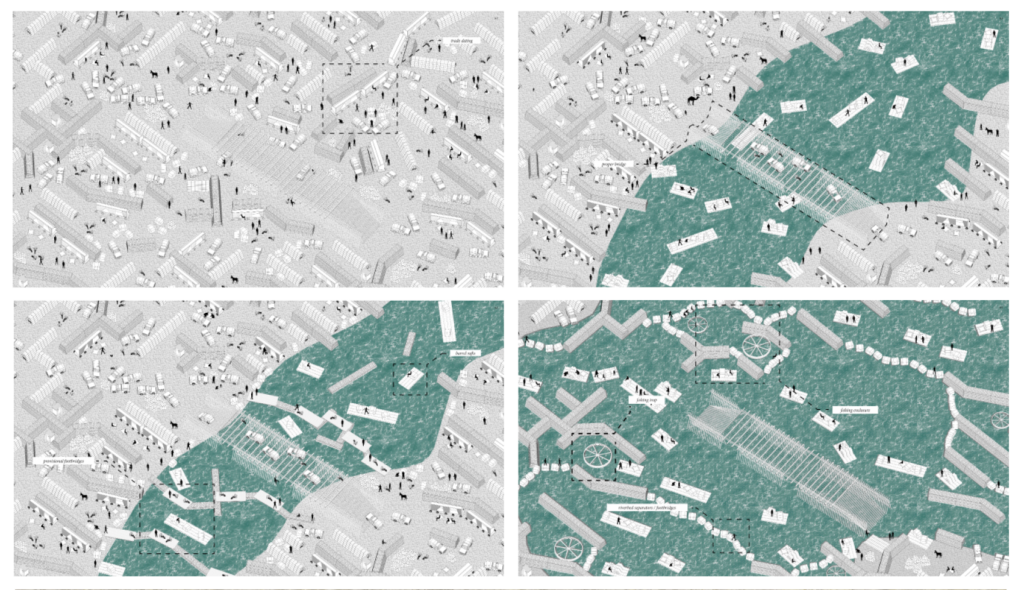
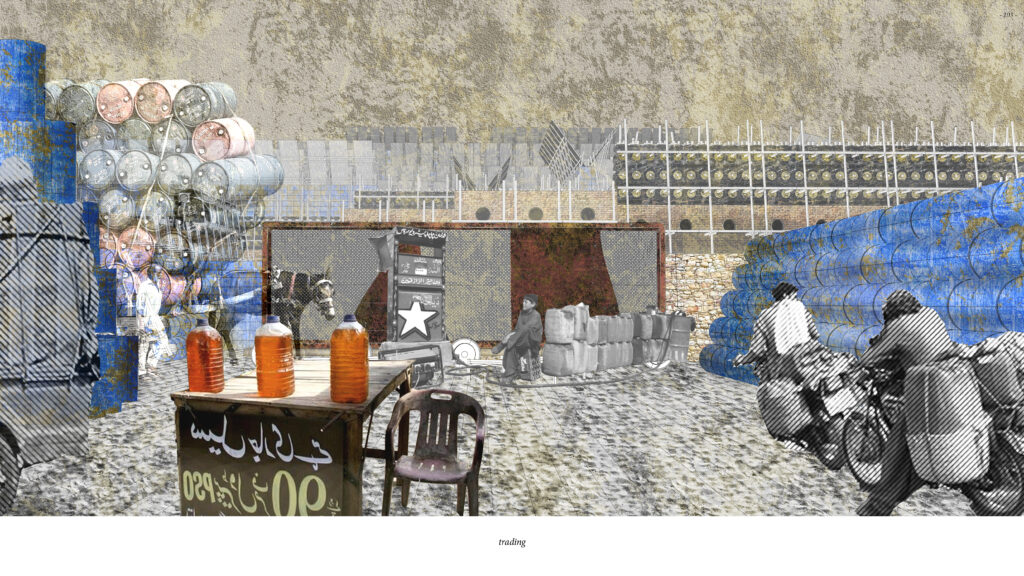
Sheltering Sector
The sheltering sector forms high, dense, and obscure areas filled with refuge-like units. These are suspended above the ground to allow traffic to pass underneath and to prevent them from being flooded. The bamboo buttresses supporting the walls additionally serve as shelves for storing the commodities above the ground.
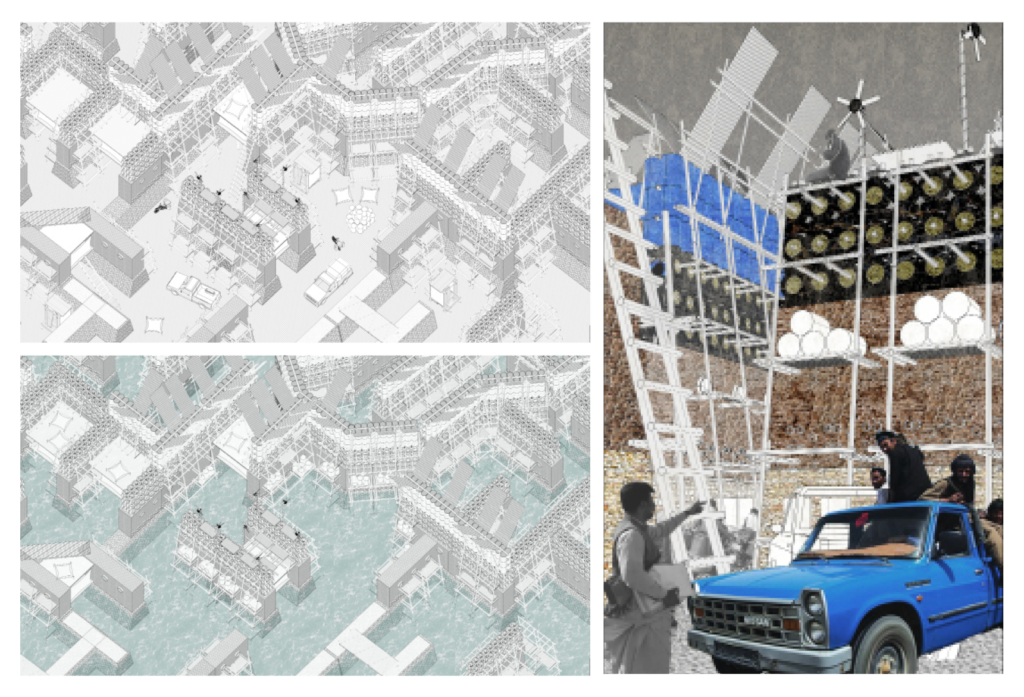
Farming Sector
Smugglers bring their animals to the settlement and grow plants using harvested rainwater and compost. This way, the outlying areas of the settlement come to life. They become destined as farming sites. It is there where rainwater directly feeds the crops and harvesting tanks. The inedible plants are additionally fertilized with compost from human waste. The camels, mules, and donkeys regularly used by the smugglers to carry their commodities, rest in these areas.
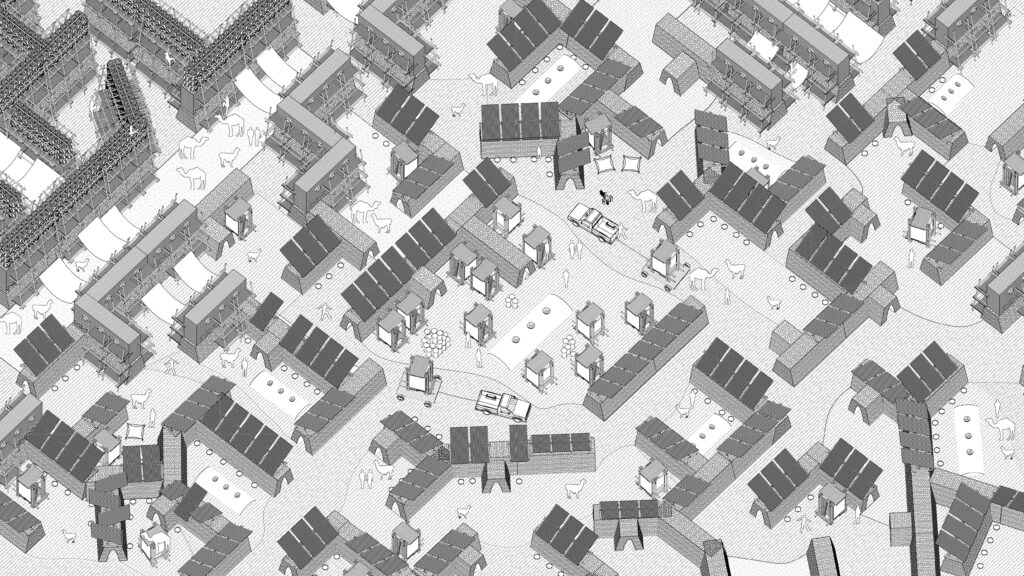
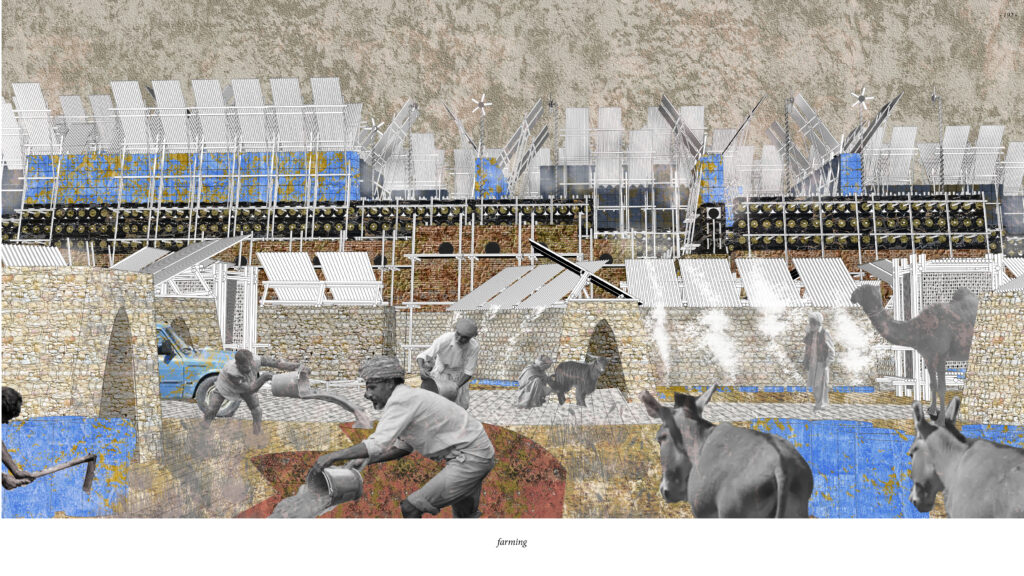
Social Interaction Sector
Naturally, the river becomes the commuting backbone of a village, organizing its social life, and triggering integration between smugglers from both sides of the border. It is there where the public life flourishes. Families and friends from both sides enjoy their time together, organizing joint feasts and eventually arranging cross-border marriages. This is where Balochis will eventually become united again, regardless of the national frontier. Adapting to the river occurrence they benefit from the riverbed. When the water emerges, they construct overpasses, barrel rafts, and provisional walking bridges, taking over the river and fortifications.
